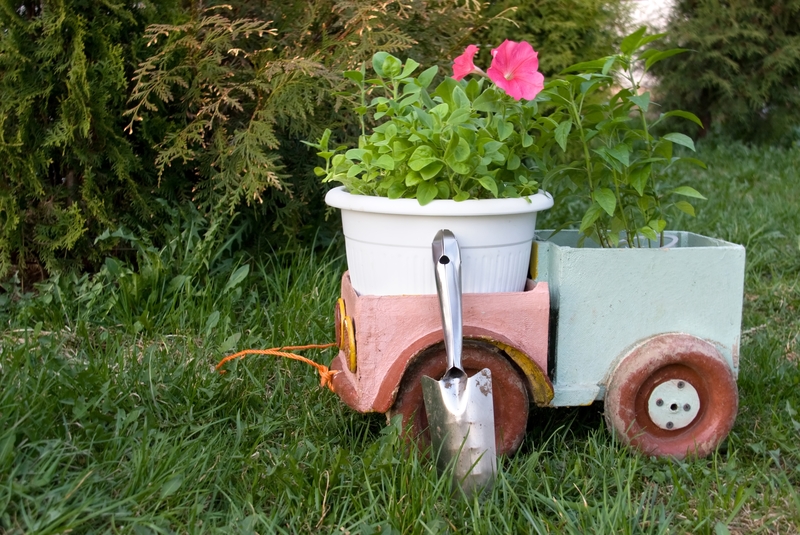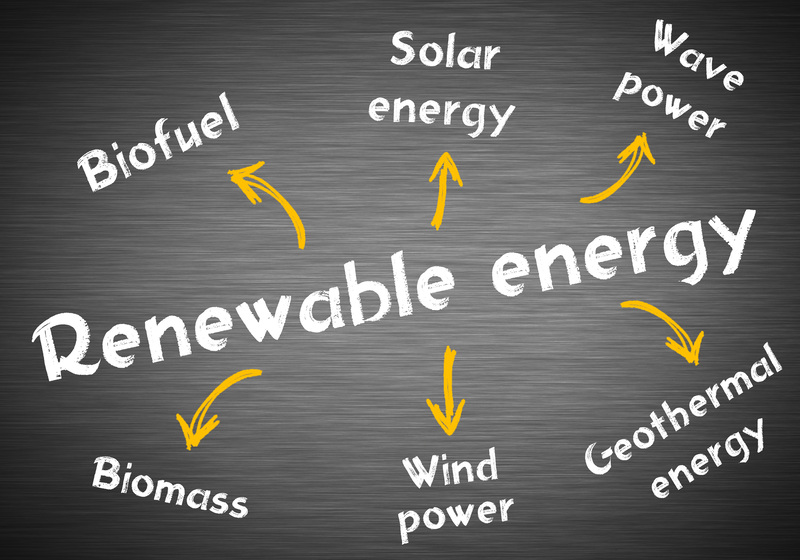Smart Recycling Approaches for Pots and Pans
In today's world, sustainability is not just a trend but a necessity. Kitchens become the heart of every home, and over time, old cookware, including pots and pans, finds its way to the back of cupboards or, unfortunately, the landfill. But did you know that there are smart and eco-friendly ways to recycle pots and pans? Recycling cookware doesn't have to be complicated. By employing innovative techniques and considering creative upcycling ideas, it's possible to give your old pots and pans new life while helping the environment.

Why Recycling Cookware is Important
The average consumer uses a combination of nonstick, stainless steel, cast iron, and aluminum pots and pans throughout their lives. When these items reach the end of their lifespan, improper disposal can lead to increased landfill waste and environmental harm. Smart pan and pot recycling approaches not only reduce environmental impact but also conserve valuable natural resources.
- Reduction of Landfill Waste: Metal cookware takes years to break down in a landfill, contributing to pollution.
- Conservation of Resources: Recycling these metals allows for the re-use of materials, reducing the need for new mining operations.
- Lower Carbon Footprint: Manufacturing new pots and pans from recycled metal uses significantly less energy than starting from raw materials.
Smart recycling isn't just about disposing of items responsibly; it's about rethinking how we use and reuse kitchenware on a daily basis.
Understanding Materials: What Are Pots and Pans Made Of?
Before diving into recycling solutions, it's crucial to identify the materials in your cookware. The most common materials include:
- Stainless Steel
- Aluminum
- Cast Iron
- Copper
- Nonstick Coated (Teflon or Ceramic)
- Enamel Coated
Each material has unique recycling requirements. Understanding this is essential for effective, smart recycling approaches for old cookware.
Smart Recycling Methods for Pots and Pans
1. Local Recycling Centers: The First Option
Most communities have local recycling facilities that accept metal goods. Recycling centers often accept pots and pans, especially if they are made from pure metal such as steel or aluminum. To ensure your cookware is accepted, follow these easy steps:
- Check your local recycling program guidelines for accepted metals.
- Remove any non-metal parts (plastic handles, rubber grips, lids).
- Separate cookware by material type (stainless steel, aluminum, etc.).
- Clean items to remove excess food debris or oils.
Recycling cookware at a center is a simple and effective approach to make your kitchen greener.
2. Scrapyards: Turning Pots and Pans into Value
Metal scrapyards are always on the lookout for valuable metals. If your pans are no longer functional, consider this smart cookware recycling method:
- Bring in stainless steel, cast iron, or aluminum pots and pans.
- Receive payment by weight -- turning trash into cash!
- Scrapyards will often take items others won't, such as old, rusted, or damaged pieces.
Always call ahead, as some scrapyards have specific requirements for the type and condition of metals they accept.
3. Curbside Pick-Up Programs
Some municipalities include small appliances and cookware in their curbside recycling programs. For smart pot recycling at home:
- Review your waste management company's rules and guidelines.
- Attach a note labeling the items for recycling (if required).
- Bundle up similar items for easy collection.
This method is extremely convenient and ensures your pans and pots recycle efficiently with minimal effort.
4. Manufacturer Take-Back and Trade-In Programs
*Many major manufacturers and some retailers* now offer take-back programs for unwanted cookware. These programs are designed to ensure eco-friendly cookware disposal:
- Some brands offer discounts or credit toward a new purchase in exchange for your old pans.
- Items are recycled professionally -- keeping hazardous coatings and waste out of landfills.
*Check brands like Calphalon, Le Creuset, and Williams Sonoma for ongoing programs.*
Creative Upcycling: Giving New Life to Old Cookware
Smart recycling for pots and pans isn't limited to traditional recycling. Upcycling transforms old, unusable cookware into beautiful or practical new items. This is not only environmentally friendly but also a fun way to express creativity!
1. Pots and Pans as Planters
Old saucepans and frying pans make unique garden planters. Here's how:
- Drill drainage holes in the base (if not already present).
- Paint or decorate the outside for a personalized touch.
- Plant herbs, succulents, or flowers inside.
These upcycled planters are not only functional, but also add a quirky charm to gardens and balconies.
2. Wall Art and Home Decor
Use old pans to create eye-catching wall displays:
- Arrange pans of different sizes as a statement piece in your kitchen.
- Paint them or apply mosaic designs for visual interest.
- Hang copper pans for a rustic or vintage feel.
Smart pan recycling can elevate your home's decor while promoting sustainability.
3. Organizers and Storage Solutions
Get organized by using cookware creatively:
- Turn deep pots into utensil holders or craft supply organizers.
- Use shallow pans as trays for keys, mail, or jewelry.
With minimal effort, your old kitchenware can become unique storage containers.
4. DIY Clocks and Creative Projects
With a clock kit and a little imagination, transform a frying pan into a fun and functional timepiece. Other upcycling ideas include:
- Bird feeders (by adding a chain and filling with seed).
- Candle holders or lanterns (by adding glass and candles).
- Wind chimes (by suspending utensils and pot lids).
Such innovative recycling approaches for pans and pots not only reduce waste but also add personality to your home and garden.
Special Considerations: Nonstick and Coated Cookware
Items with a nonstick coating (like Teflon) or enamel present unique challenges for smart recycling of cookware:
- Hazardous Material: Nonstick coatings can release hazardous chemicals when overheated or improperly disposed of.
- Recycling Limitations: Many recycling programs and scrapyards DO NOT accept nonstick or ceramic-coated pans with their coatings still intact.
What can you do?
- Contact the manufacturer for recycling advice or take-back options.
- Some local hazardous waste facilities accept coated pans separately.
- Consider removing the handles and using the pan as described in the Upcycling section if unable to recycle traditionally.
Best Practices for Eco-Friendly Kitchenware Disposal
Whatever method you choose, follow these best practices for a smarter cookware recycling strategy:
- Prioritize Donation: If your pots and pans are still usable, consider donation first. Thrift stores, shelters, and charities often welcome gently used cookware.
- Prepare Items Properly: Remove non-metal parts and clean thoroughly.
- Check Local Guidelines: Municipalities differ widely in what they accept for recycling.
- Be Cautious with Nonstick and Coated Cookware: Don't try to remove the coating yourself; consult professionals where necessary.
- Get Creative: Upcycle before you recycle.
Smart Pot and Pan Recycling for Different Materials
Stainless Steel & Aluminum
These are the most commonly recycled metals and accepted by almost all recycling centers and scrapyards. Remove plastic or rubber handles for best results.
Cast Iron
Cast iron is highly valuable in the scrap market. Don't throw it away! If the item is broken or unusable, take it to a metal recycler. Otherwise, consider seasoning it for renewed use or gifting it to someone who restores cast iron cookware.
Copper & Enamel-Coated Cookware
Copper pots and pans can fetch a high price at scrapyards. Enamel-coated pans are trickier--as the enamel must often be removed prior to recycling.
Nonstick / Teflon-Coated
Most centers will not accept these. Seek specialized programs or consider creative repurposing if traditional recycling is unavailable.
Global Trends in Smart Cookware Recycling
Around the world, circular economy initiatives and stricter recycling mandates are forcing companies and consumers alike to rethink kitchenware disposal. For example:
- Europe: Many European countries have advanced metal recycling infrastructures and even mandate cookware takeback programs.
- United States: Retail take-back and recycling reward programs are growing.
- Asia: Creative repurposing and trade-in schemes are spreading in busy cities where landfill space is limited.
As these initiatives become more widespread, it will become even easier and more rewarding for everyone to engage in smart recycling of pots and pans.

Frequently Asked Questions about Pots and Pan Recycling
Can nonstick pans be recycled?
Most recycling centers cannot process nonstick cookware due to the coating. Look for manufacturer take-back programs or hazardous waste disposal options. Upcycling can also be a fun, sustainable alternative!
Are cast iron pans recyclable?
Yes! Cast iron is highly recyclable and valuable at metal scrapyards. Many enthusiasts also seek old cast iron pieces to restore and reuse.
Should I donate old pots and pans?
Absolutely, if they are still usable. Donating extends the life cycle of your cookware and benefits someone in need.
What's the environmental impact of recycling cookware?
Recycling metal cookware significantly reduces demand for new metals, cuts energy use, and keeps non-biodegradable products out of landfills.
Conclusion: A Sustainable Future for Cookware
Smart recycling approaches for pots and pans are an essential step toward a more sustainable lifestyle. Whether you opt for traditional recycling, embrace creative upcycling, or participate in manufacturer take-back programs, your actions help conserve resources and protect the planet. Don't let old cookware gather dust or end up in the landfill -- give your pots and pans a new life and inspire others to do the same. Together, through innovative pan and pot recycling solutions, we can cook up a greener future for everyone.